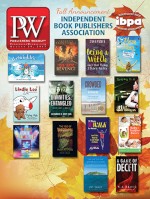Holding a paper map may feel anachronistic in the smartphone age, but for some travelers, seeking guidance from annotated, targeted maps beats hunting for Wi-Fi on a street corner or relying on Yelp reviews for recommendations.
Ben Olins and Jane Smillie, the founders of Herb Lester, didn’t set out to become map publishers. Seven years ago, the pair, who’d met as colleagues at Channel 4 in the U.K., were working as freelance editorial consultants. They couldn’t afford an office, so they would meet up at coffee shops around London to work.
Most of these places were homogeneous chain cafes, Olins says; the pair began to seek out the ones with more appealing working environments, and map their findings. Their homegrown map became You Are Here, a foldout guide to indie coffee joints in central London.
The project established Herb Lester’s mission: to make maps that highlight places the publishers themselves would want to hang out in. Since it launched, the company has made more than 70 maps to dozens of cities around the globe. Herb Lester’s maps aim to convey the kind of idiosyncratic details one would get from an in-the-know friend: the location of the café in Valencia that’s housed in a 15th-century silk exchange building, or the 1970s record store that lives on in Liverpool.
“If you’re going to Berlin and you look online you can find thousands of things to do, but you don’t really know what you’re going to get,” Olins says. “Our maps give you 40 places we’ve been to that we say are really great.”
To compile the maps, Olins and Smillie solicit suggestions from friends, cab drivers, and concierges, among others. They do most of the legwork themselves, but sometimes, as in the case of their new guide to Valencia, they hire local writers.
The maps’ throwback look is thanks to the interest Olins and Smillie share in vintage travel guides such as Holiday and The New London Spy. To achieve their signature style, they work with different designers, some of whom they found on book-cover design websites The Casual Optimist and Book Cover Archive.
In the U.S., Prestel distributes Herb Lester to a healthy roster of indie bookshops and design-minded boutiques. Los Angeles County Store, for example, stocks How to Find Old L.A. and The Raymond Chandler Map of Los Angeles, two examples of the way the publisher highlights niche interests.
“In an increasingly globalized world, it’s very easy to have the same experience everywhere you go,” Smillie says. “We really try to avoid that.”
The publisher has several new maps for October. Everybody Loves Porto leads visitors to La Paz, a men’s clothing shop located in a former drugstore that retains the original shop fittings, wood paneling, and stone walls, and Serralves, a complex that includes a contemporary art gallery, parkland, and an art deco villa.
Other forthcoming releases include Valencia: Easy Does It, whose highlights include Simple, a shop selling Spanish-made vermouth, espadrilles, toys, and more; and Venice Step Lightly, which suggests a visit to the mid-century, mosaic-tiled Olivetti typewriter showroom.
An Adventure Unfolds
Parsons graduate Stephan Van Dam founded his eponymous map company in 1984, after patenting a way of folding paper that, after opening, automatically refolded. More than two dozen of his origami-style maps are now in the Museum of Modern Art’s permanent collection.
The publisher produces a variety of general tourist maps, and updates those for key cities, including New York City, San Francisco, London, and Paris, twice a year. The publisher also produces specialty maps targeting niche interests, such as a map that focuses on the attractions at the National Mall in Washington, D.C., and a guide to film and TV locations in N.Y.C.
Booksellers are playing an increasingly critical role in his company’s sales, Van Dam says; bookstore sales are up by a factor of five from this time a year ago. One of the publisher’s bestsellers has been StreetSmart Havana, a guide to the Cuban capital’s hotels, eateries, cultural attractions, and more.
“Cuba has been a wonderful niche market for us,” Van Dam says. The destination’s popularity among nature enthusiasts led to the introduction this year of NatureSmart Cuba, which charts hiking areas, diving spots, and beaches and highlights the kinds of birds, butterflies, and fish that can be found in different regions of the island.
Digital fatigue, Van Dam says, has upped the interest in print maps, which can become keepsakes and offer travelers “proof that they’ve actually been someplace.”



 Volume 264
Issue 35
08/28/2017
Volume 264
Issue 35
08/28/2017





